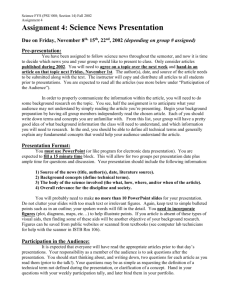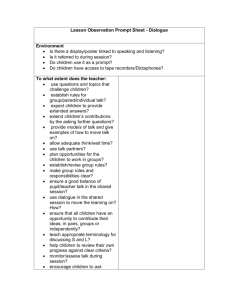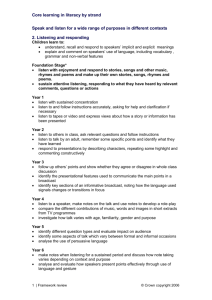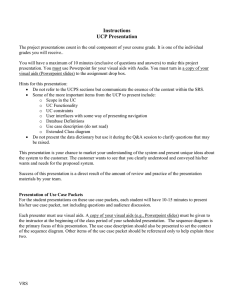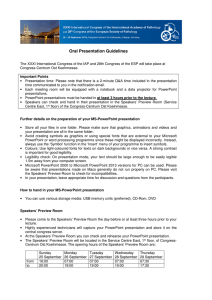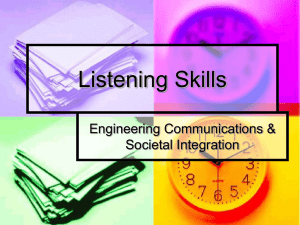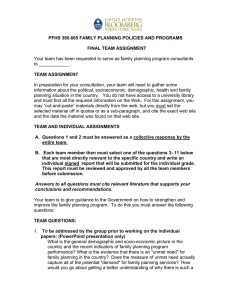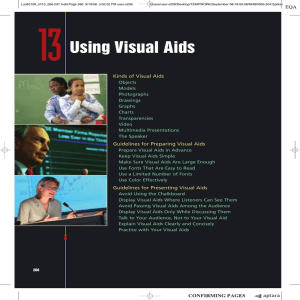Oral presentation
advertisement
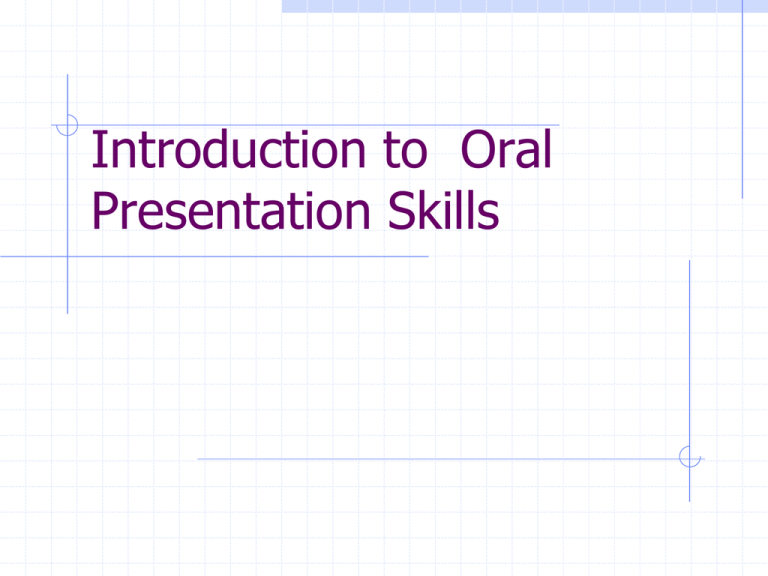
Introduction to Oral Presentation Skills Components of Oral Presentation Presentation Objective Organization Preparation Supporting materials and visual aids Delivery Listening Evaluation Presentation Objective What is the Purpose of the Presentation? Technical Briefing Proposal Formal Presentation Who is it for? Technical audience Non-technical audience Team presentation Organization Beginning Create attention and interest Body These are the facts Conclusion Tell them what you want them to remember summarize Closing Thank you Ask for job, etc. Organization – another way to look at it “Tell ‘em what you’re gonna to tell ‘em” “Tell ‘em” “Tell ‘em what you told ‘em” Preparation Know time limits Know where you will be presenting Are notes allowed or advisable? Outline presentation Prepare opening and closing statements Write them out/Memorize Determine if support material is needed Supporting materials and visual aids What is really needed? Keep materials focused Consider PowerPoint carefully Consider models or props if appropriate Delivery Timing – how long do you have Practice – out loud and all the way through, several times Dress – appropriate for occasion (Formal Presentation) Voice projection Eye contact Gestures Delivery Ah, like, you know, um! Double clutches or restarts Nervousness Know your topic well You know more that the audience Relax – It gets easier every time you rehearse it. Listening Someone spent a lot of time preparing Listen carefully Is Organization Clear Is Speech Informative Could I Follow the Development? Was There a Summary and Conclusion? Listening (Con’t) Content What did I learn? Was it correct? Could I ask an intelligent question? Always be prepared to ask a question Evaluation of Oral Presentation This is a personal response It is your reaction to the quality of a presentation It is not a argument to change the speakers position Address strengths and items done well Suggest improvements Evaluation of Presentation(Con’t) When you evaluate, you are speaking for yourself – “We”, “The audience …”, “They say”, don’t belong Avoid judgment “Good speakers don’t ..” Do have opening and conclusion Don’t repeat points Not all presentations are perfect, but you should try to give your best evaluation every time. For This Talk … Formal Presentation on Your Research Topic Presented to technical audience Audience has some familiarity with topic What do you present? What was your Research Question? What did you find about the Question? Combining everyone’s work, What did you find significant How can you bring all that together into a coherent presentation? Team Presentation Coordinate the speech How do you introduce speakers How do you maintain continuity and transitions Support main message stay on task Consider visual aids carefully Make wrap-up convincing How do you handle questions Time limit – 5 min/team 4 minute presentation Each Person should speak about the same amount of time 1 minute Q&A PowerPoint Just because it is possible doesn’t mean it is preferable PowerPoint Examples Of What You Might Not Want to do During the Rest of Class Get together with your group Discuss what each of you did Find common ground Discuss an approach to topic Divide work evenly Start Working on the Details of your Presentation (end)

